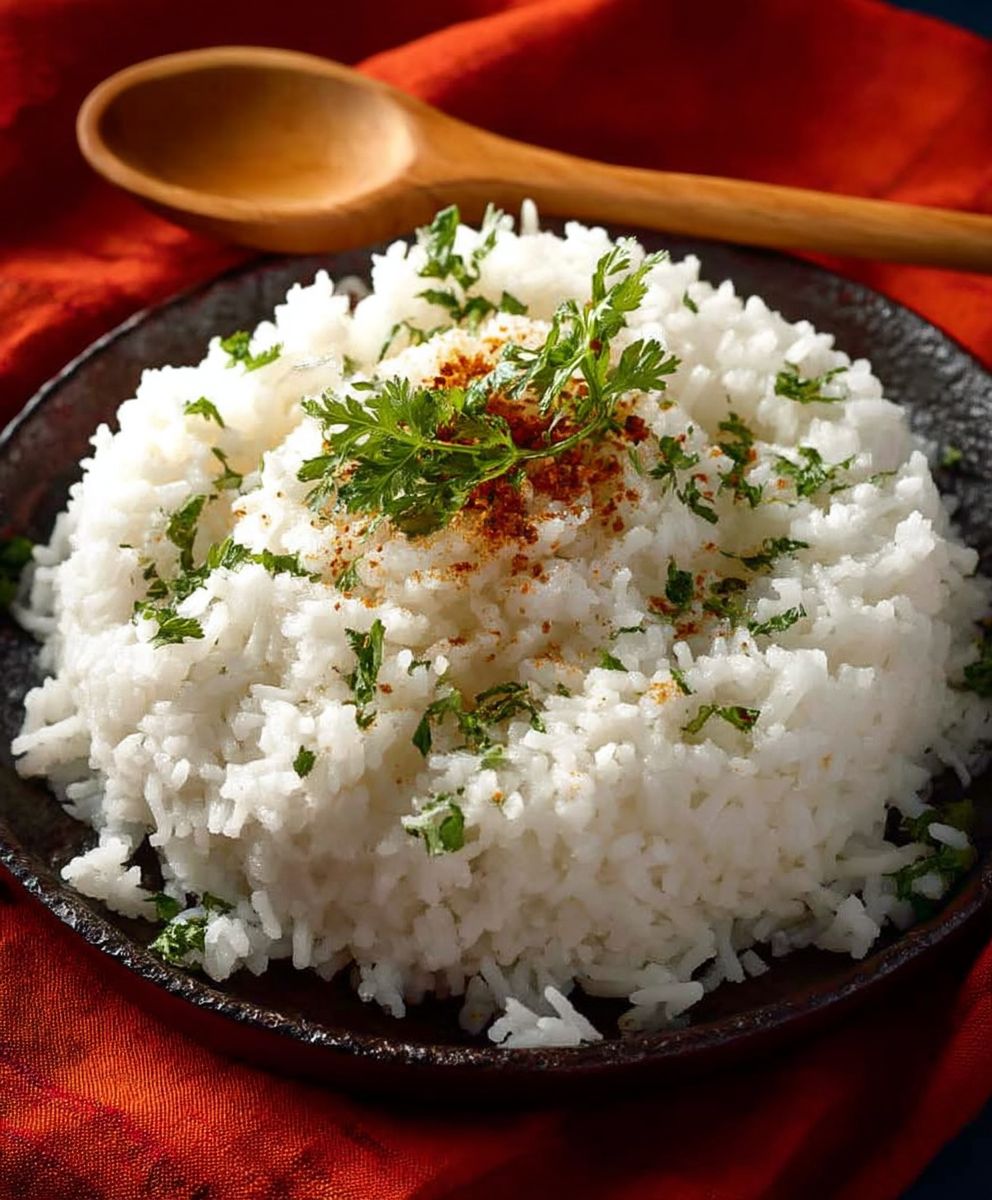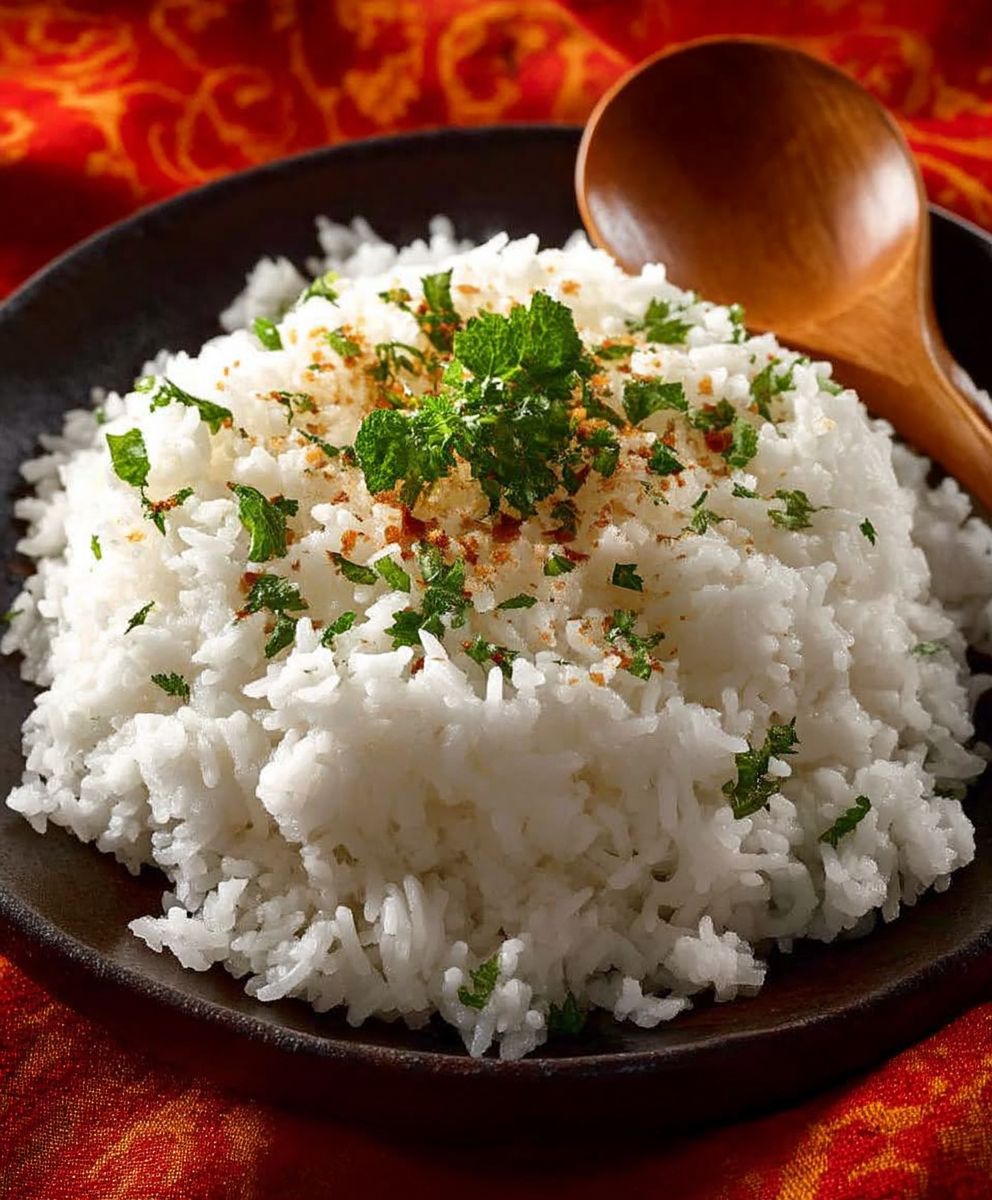Jasmine Rice Cooking Tips: Are you ready to unlock the secrets to perfectly fluffy, fragrant jasmine rice every single time? I know I was tired of gummy, sticky messes or rice that was either undercooked or burnt. That’s why I’ve dedicated myself to mastering the art of cooking this beloved grain, and I’m thrilled to share my tried-and-true techniques with you!
Jasmine rice, with its delicate floral aroma and slightly sweet flavor, is a staple in Southeast Asian cuisine, particularly in Thailand, where it originated. For centuries, it has been cherished not only for its exquisite taste but also for its cultural significance, often served during special occasions and religious ceremonies. Its popularity has since spread worldwide, captivating palates with its unique characteristics.
What makes jasmine rice so irresistible? It’s the delightful combination of its fluffy texture, subtle sweetness, and that intoxicating fragrance that fills your kitchen as it cooks. Its incredibly versatile, pairing beautifully with everything from savory stir-fries and curries to grilled meats and seafood. Plus, with the right jasmine rice cooking tips, it’s surprisingly easy to prepare, making it a perfect weeknight staple. Let’s dive in and discover how to achieve rice perfection!
Ingredients:
- 2 cups Jasmine Rice
- 3 cups Water (or Chicken Broth for extra flavor)
- 1 tablespoon Olive Oil (or Coconut Oil)
- ½ teaspoon Salt (or to taste)
- Optional: 1 bay leaf
Preparing the Rice:
- Rinsing the Rice: This is a crucial step! Place the jasmine rice in a fine-mesh sieve or a large bowl. Rinse the rice under cold running water, gently swirling it with your hand, until the water runs clear. This usually takes about 2-3 minutes. Rinsing removes excess starch, which prevents the rice from becoming sticky and gummy during cooking. Don’t skip this! I find that rinsing it in a bowl and changing the water several times works best. You’ll see the water go from cloudy to almost completely clear.
- Choosing Your Cooking Vessel: You can cook jasmine rice in a saucepan on the stovetop, in a rice cooker, or even in the microwave. I prefer the stovetop method for its simplicity and control, but a rice cooker is incredibly convenient. If using a rice cooker, follow the manufacturer’s instructions. For the stovetop method, choose a heavy-bottomed saucepan with a tight-fitting lid. The heavy bottom helps distribute heat evenly, preventing scorching.
- Adding the Rice and Water: Transfer the rinsed rice to your chosen cooking vessel. Add the water (or chicken broth) and salt. The ratio of rice to water is important for perfectly cooked jasmine rice. The standard ratio is 1 part rice to 1.5 parts water. So, for 2 cups of rice, you’ll need 3 cups of water. If you’re using chicken broth, reduce the salt slightly, as the broth already contains sodium. Add the olive oil (or coconut oil) at this stage. The oil helps to prevent the rice from sticking together and adds a subtle richness to the flavor. If you’re using a bay leaf, add it now as well. It will infuse the rice with a delicate aroma.
Cooking the Rice:
- Bringing to a Boil: Place the saucepan over high heat and bring the water to a rolling boil. Watch it carefully, as it can boil over quickly. Once it reaches a boil, immediately reduce the heat to the lowest setting.
- Simmering the Rice: Cover the saucepan tightly with the lid. It’s essential to keep the lid on throughout the simmering process to trap the steam and ensure even cooking. Simmer the rice for 15 minutes. Do not lift the lid during this time! Peeking will release the steam and disrupt the cooking process, resulting in unevenly cooked rice. Set a timer for 15 minutes and resist the urge to check on it.
- Resting the Rice: After 15 minutes of simmering, remove the saucepan from the heat. Again, do not lift the lid! Let the rice rest, covered, for another 10 minutes. This resting period allows the remaining steam to gently finish cooking the rice and helps it to become fluffy and tender. This is just as important as the simmering time.
- Fluffing the Rice: After the 10-minute resting period, remove the lid. Use a fork to gently fluff the rice. This separates the grains and prevents them from clumping together. Be careful not to over-stir, as this can make the rice mushy. Remove the bay leaf, if you used one.
Tips and Tricks for Perfect Jasmine Rice:
- Water Ratio is Key: While the 1:1.5 ratio is a good starting point, you may need to adjust it slightly depending on your stove and the type of rice you’re using. If the rice is too dry, add a tablespoon or two of water during the resting period. If it’s too wet, cook it uncovered for a few minutes after the resting period to allow the excess moisture to evaporate.
- Don’t Overcook: Overcooked jasmine rice will be mushy and sticky. It’s better to err on the side of slightly undercooked rice, as it will continue to cook during the resting period.
- Use a Heavy-Bottomed Pan: A heavy-bottomed pan helps to distribute heat evenly and prevents scorching. If you don’t have a heavy-bottomed pan, you can use a heat diffuser.
- Don’t Lift the Lid: I can’t stress this enough! Lifting the lid during the simmering and resting periods will release the steam and disrupt the cooking process.
- Experiment with Flavors: Jasmine rice is a blank canvas for flavor. Try adding different herbs, spices, or vegetables to the cooking water. Some popular additions include ginger, garlic, lemongrass, and coconut milk.
- Cooking with Broth: Using chicken broth or vegetable broth instead of water will add a richer flavor to the rice. Just be sure to reduce the amount of salt you add.
- Storing Leftover Rice: Leftover jasmine rice can be stored in an airtight container in the refrigerator for up to 3 days. To reheat, add a tablespoon of water to the rice and microwave it for 1-2 minutes, or until heated through. You can also reheat it in a saucepan on the stovetop over low heat.
- Preventing Sticking: Even with rinsing and oil, sometimes rice can still stick to the bottom of the pan. To minimize this, ensure the heat is truly on the lowest setting possible. You can also try placing a heat-proof mat or trivet between the pan and the burner to further diffuse the heat.
- Adjusting for Altitude: If you live at a high altitude, you may need to increase the cooking time slightly. Start by adding a few extra minutes to the simmering time and check the rice for doneness.
- Using a Rice Cooker: If you prefer using a rice cooker, follow the manufacturer’s instructions for jasmine rice. Most rice cookers have a specific setting for white rice, which will work well for jasmine rice. The water ratio may vary slightly depending on the rice cooker model, so consult the manual.
Troubleshooting:
- Rice is Too Sticky: You probably didn’t rinse the rice thoroughly enough. Next time, rinse it until the water runs completely clear. Also, make sure you’re using the correct water ratio.
- Rice is Too Dry: You may have used too little water or cooked the rice for too long. Next time, increase the amount of water slightly and reduce the cooking time.
- Rice is Mushy: You may have used too much water or overcooked the rice. Next time, decrease the amount of water slightly and reduce the cooking time. Also, avoid stirring the rice too much during cooking.
- Rice is Scorched: The heat was probably too high. Make sure you reduce the heat to the lowest setting after bringing the water to a boil. Also, use a heavy-bottomed pan to distribute heat evenly.
Serving Suggestions:
Jasmine rice is a versatile grain that pairs well with a variety of dishes. Here are a few serving suggestions:
- Serve it as a side dish with stir-fries, curries, and grilled meats.
- Use it as a base for rice bowls with your favorite toppings.
- Make fried rice with vegetables, eggs, and soy sauce.
- Use it in sushi rolls.
- Serve it with coconut milk and mango for a delicious dessert.
Enjoy your perfectly cooked Jasmine Rice!

Conclusion:
So, there you have it! Mastering the art of cooking perfect jasmine rice isn’t as daunting as it might seem. With these simple tips and tricks, you’re well on your way to fluffy, fragrant rice every single time. I truly believe this method is a game-changer, and I’m confident that once you try it, you’ll never go back to your old ways.
But why is this recipe a must-try? Well, beyond the sheer deliciousness of perfectly cooked jasmine rice, it’s incredibly versatile. It’s the ideal base for countless dishes, from vibrant stir-fries and flavorful curries to comforting rice bowls and even sweet rice puddings. Think about it: a steaming bowl of jasmine rice alongside a spicy Thai green curry, or perhaps nestled beneath a generous serving of Korean bulgogi. The possibilities are truly endless!
And speaking of possibilities, let’s talk about serving suggestions and variations. While jasmine rice is fantastic on its own, you can easily elevate it with a few simple additions. Consider stirring in a knob of butter or a drizzle of sesame oil after cooking for added richness and aroma. For a more savory flavor, try cooking the rice in chicken or vegetable broth instead of water. You could also add a pinch of turmeric for a beautiful golden hue and a subtle earthy flavor. If you’re feeling adventurous, experiment with different herbs and spices, such as chopped cilantro, ginger, or even a sprinkle of chili flakes.
For a complete meal, I love serving my jasmine rice with grilled salmon and steamed asparagus. It’s a healthy, satisfying, and incredibly flavorful combination. Another favorite is using it as the foundation for a vibrant poke bowl, topped with fresh tuna, avocado, seaweed salad, and a drizzle of spicy mayo. And for a quick and easy weeknight dinner, you can’t go wrong with a simple stir-fry featuring your favorite vegetables and protein, served over a bed of fluffy jasmine rice.
Don’t be afraid to get creative and experiment with different flavor combinations. The beauty of jasmine rice is that it complements so many different cuisines and ingredients. It’s a blank canvas just waiting to be transformed into something truly special.
I’m so excited for you to try this recipe and experience the joy of cooking perfect jasmine rice for yourself. I know you’ll be amazed at how easy it is to achieve restaurant-quality results at home. And remember, the key is to follow the instructions carefully and don’t be afraid to experiment until you find what works best for you.
So, what are you waiting for? Grab your rice cooker (or your trusty pot), gather your ingredients, and get cooking! I’m confident that you’ll be delighted with the results. And most importantly, I’d love to hear about your experience. Please share your photos, tips, and variations in the comments below. Let’s create a community of jasmine rice enthusiasts and inspire each other with our culinary creations. Happy cooking!
I truly believe that mastering the art of jasmine rice cooking will elevate your home cooking to a whole new level. It’s a skill that will serve you well for years to come, and I’m thrilled to be a part of your culinary journey. Now go forth and create some deliciousness!
Jasmine Rice Cooking Tips: Achieve Perfect Fluffy Rice Every Time
Perfectly cooked, fluffy Jasmine Rice, made easily on the stovetop. A versatile side dish for any meal!
Ingredients
- 2 cups Jasmine Rice
- 3 cups Water (or Chicken Broth)
- 1 tablespoon Olive Oil (or Coconut Oil)
- ½ teaspoon Salt (or to taste)
- Optional: 1 bay leaf
Instructions
- Rinse the Rice: Place the jasmine rice in a fine-mesh sieve or a large bowl. Rinse the rice under cold running water, gently swirling it with your hand, until the water runs clear (2-3 minutes).
- Add Rice and Water: Transfer the rinsed rice to a heavy-bottomed saucepan with a tight-fitting lid. Add the water (or chicken broth), salt, and olive oil (or coconut oil). If using a bay leaf, add it now.
- Bring to a Boil: Place the saucepan over high heat and bring the water to a rolling boil. Immediately reduce the heat to the lowest setting.
- Simmer: Cover the saucepan tightly with the lid. Simmer the rice for 15 minutes. Do not lift the lid!
- Rest: Remove the saucepan from the heat. Do not lift the lid! Let the rice rest, covered, for another 10 minutes.
- Fluff: After the 10-minute resting period, remove the lid. Use a fork to gently fluff the rice. Remove the bay leaf, if used.
Notes
- The water ratio is key: 1 part rice to 1.5 parts water. Adjust slightly if needed.
- Don’t overcook. It’s better to err on the side of slightly undercooked rice.
- Don’t lift the lid during simmering and resting.
- Experiment with flavors by adding herbs, spices, or vegetables to the cooking water.
- Using chicken broth or vegetable broth instead of water will add a richer flavor to the rice. Just be sure to reduce the amount of salt you add.
- Leftover jasmine rice can be stored in an airtight container in the refrigerator for up to 3 days. To reheat, add a tablespoon of water to the rice and microwave it for 1-2 minutes, or until heated through. You can also reheat it in a saucepan on the stovetop over low heat.
- To minimize rice sticking to the bottom of the pan, ensure the heat is truly on the lowest setting possible. You can also try placing a heat-proof mat or trivet between the pan and the burner to further diffuse the heat.
- If you live at a high altitude, you may need to increase the cooking time slightly. Start by adding a few extra minutes to the simmering time and check the rice for doneness.
- If you prefer using a rice cooker, follow the manufacturer’s instructions for jasmine rice. Most rice cookers have a specific setting for white rice, which will work well for jasmine rice. The water ratio may vary slightly depending on the rice cooker model, so consult the manual.






Leave a Comment